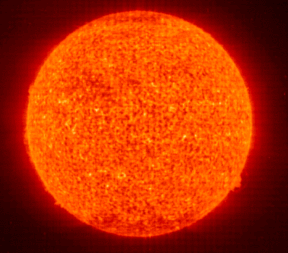Solar astronomers: Sun has entered into a very quite state
 Sun appears to have gone into lull! The solar astronomers have noticed that Sun has gone unusually quiet recently, with fewer sunspots and weaker magnetic fields. According to astronomers, Sun has gout into placid period, in which they have not been able to notice its usual solar flares, storms, or spots.
Sun appears to have gone into lull! The solar astronomers have noticed that Sun has gone unusually quiet recently, with fewer sunspots and weaker magnetic fields. According to astronomers, Sun has gout into placid period, in which they have not been able to notice its usual solar flares, storms, or spots.
The scientists at the US space agency NASA have reported that they have noticed an unusually quiet time for the Sun with the sunspot counts has declined even lower in 2009. The scientists reported that as on March 31, there were no sunspots on 78 of the year's 90 days (87%). The NASA scientist had reported last year that the solar cycle had hit the bottom in 2008, as they could not notice any sunspots on 266 days (73%) of 366 days.
Solar physicist Dean Pensell of the Goddard space Flight Centre of NASA, said, "We are experiencing a very deep solar minimum." Marshall Space Flight Center sunspot expert David Hathaway said, “This is the quietest sun we've seen in almost a century. Since the Space Age began in the 1950s, solar activity has been generally high. Five of the ten most intense solar cycles on record have occurred in the last 50 years. We're just not used to this kind of deep calm.”
According to solar astronomers, the sunspots – the areas on the surface of the Sun showing intense magnetic activity – of the Sun die off during solar cycle minimum, every 11 years or so.
The scientists say that the calm Sun is good for Earth. In the quiet period of Sun, GPS systems work more accurately, satellites can stay in orbit longer, the effects of global warming are marginally lessened, though just by three-tenths of a degree at most.
Meanwhile, according to Prof Mayank Vahia, senior astrophysicist of the Tata Institute of Fundamental Research (TIFR), this is a golden opportunity for the scientists to study Sun in such a quiet phase. The calm Sun may not have serious effects on inhabitants of the earth.